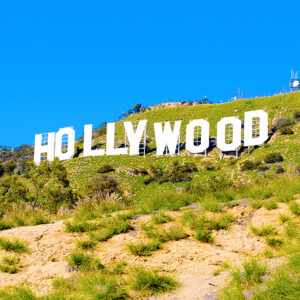One hundred years ago last week, America was in mourning. The president had suddenly died, and Hollywood was about to collapse. The two were linked in the greatest failure you’ve never heard of. Everything that could go wrong did.
But we’re getting ahead of ourselves. The forces that culminated in that spectacularly miserable summer were set into motion the year before.
Hollywood had a huge PR problem in 1922. The movie industry was under attack after a seemingly endless string of scandals.
First, actor and director William Desmond Taylor was fatally shot in his home. Suspects included some of Tinsel Town’s biggest names. Yet, his murderer was never identified.
Then there was box office darling Mabel Normand, whose life was a train wreck. Implicated in Taylor’s death, her cocaine addiction was notorious.
But the biggest scandal of all (pun intended) was Fatty Arbuckle. The fat funnyman was a major star, on a level with Charlie Chaplin and Mary Pickford. He was also infamous for serious drinking and partying.
But nobody was laughing when a model, minor movie actress party girl died after being raped at a drunken party in a San Francisco hotel in September 1921. Arbuckle was charged with manslaughter. His 1922 trial unleashed a tidal wave of damning insights into Hollywood’s decadent, self-indulgent lifestyle. Although Arbuckle was acquitted, the damage was immense. His career ruined, movie moguls feared he would take the entire industry down with him.
Local censorship boards were suddenly popping up and screening movies. Their unanimous verdict: Too much smut!
Then what moviemakers fear most happened. Ticket sales dropped. The handwriting was on the wall. The industry had to clean up its act, pronto.
Hollywood rolled into action. It created the Motion Picture Producers and Distributors of America and tapped no-nonsense former postmaster general Will Hays to run it. His office approved every film to guarantee it was squeaky clean.
But that wasn’t enough. The industry had to show Americans their angst was unfounded. So it did what Hollywood does best — it put on a show. And not just any show, but the biggest, loudest, flashiest of them all. A world’s fair.
They had done wonders for Chicago in 1893, St. Louis in 1904, and San Francisco in 1915 and were big moneymakers, too. This fair would showcase the New Hollywood while letting everyday folks meet the stars.
But that still wasn’t enough. Organizers wrapped their show of shows in the American flag. Somebody pulled out a history book and found 1923 was the 100th anniversary of the Monroe Doctrine. Problem solved.
(If you were doodling during history class, President James Monroe proclaimed the United States wouldn’t tolerate Europe interfering in the Western Hemisphere.)
With great fanfare, it was announced that the American Historical Revue and Motion Picture Exposition would be held in Los Angeles from July 2 through August 6, 1923. They had no idea they were following the same path as a future Hollywood blockbuster: Titanic.
Some Hollywood whiz kid decided to promote the event with a special commemorative half-dollar coin. That had been done for the Chicago and San Francisco world fairs; why not for Hollywood’s?
But Congress had to approve the limited-edition coin. And given Hollywood’s sinking popularity, Congress was reluctant to fling its arms around the movie industry. So the moguls showered money on Capitol Hill, and — viola! — the silver 1923 Monroe Doctrine Centennial Half Dollar was approved. Nearly 275,00 were struck.
But the public didn’t buy it. By opening day, only 27,000 were sold. The rest were dumped into general circulation, infuriating folks who had paid $1 each for their coin.
Even worse, the public didn’t go to the fair. Organizers tried to make things interesting. Different historically themed live shows were featured nightly, such as “Montezuma and the Fall of the Aztecs.” But nobody cared about the Aztecs. Or history, for that matter. The few attendees who showed up wanted to see movie stars in the flesh.
Clearly, organizers hadn’t done their marketing homework. They had projected 1 million visitors. Barely 300,000 attended — and that was only because tens of thousands of free tickets were given to teenagers in the closing weeks.
The moguls had one last ace up their sleeve. President Warren Harding was scheduled to visit on August 6. That, they confidently believed, would drive a late spike in visitation.
And it might have — if Harding hadn’t died unexpectedly in San Francisco on August 2. The last hope of the fair’s success died with him.
And so they called, “That’s a wrap!” on the American Historical Revue and Motion Picture Exposition. In a final insult, the fair lost money. It was a total flop from beginning to end.
Hollywood eventually climbed out of its funk. But the 1923 Hollywood World’s Fair didn’t help.
Please follow DVJournal on social media: Twitter@DVJournal or Facebook.com/DelawareValleyJournal

